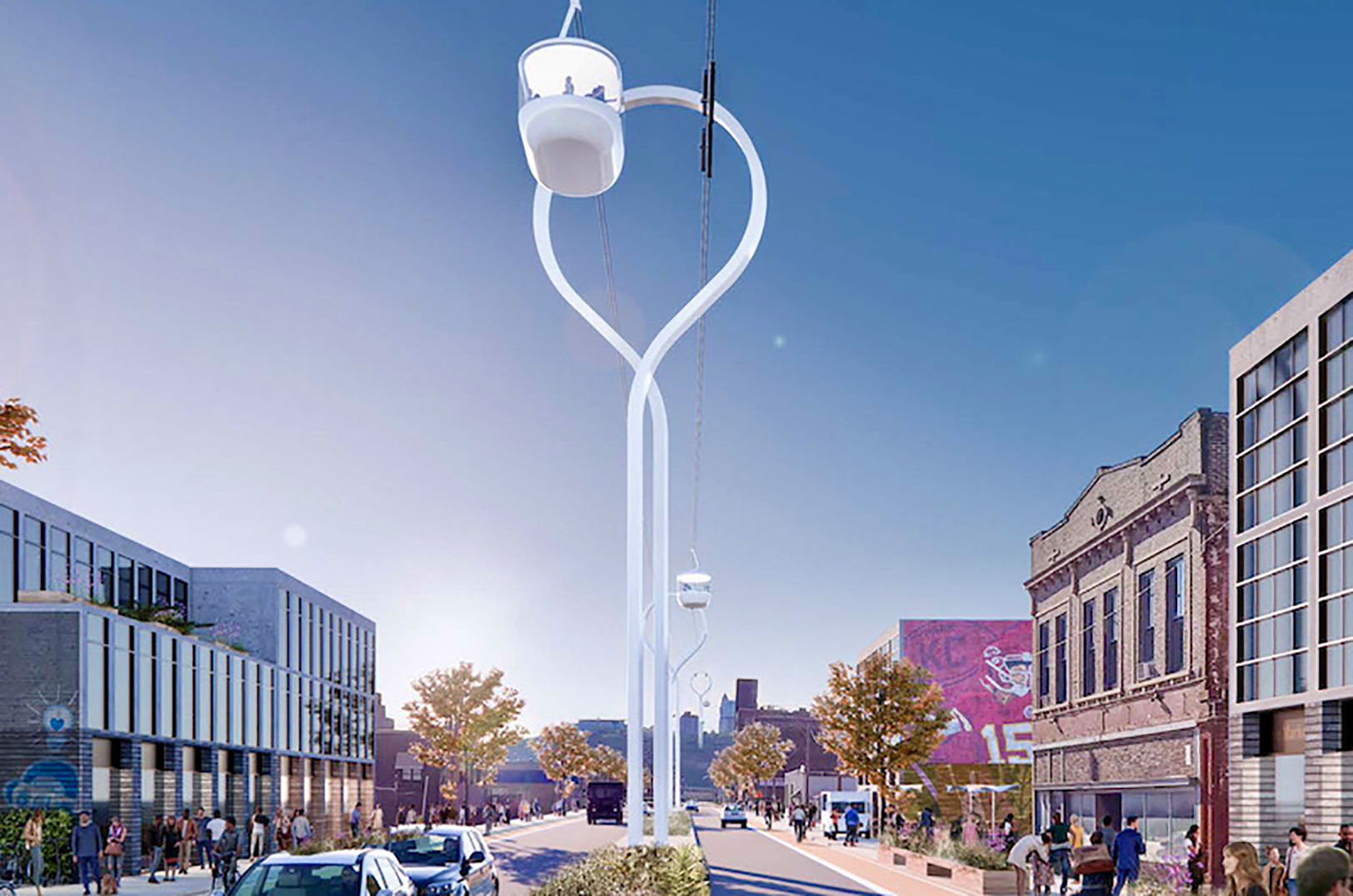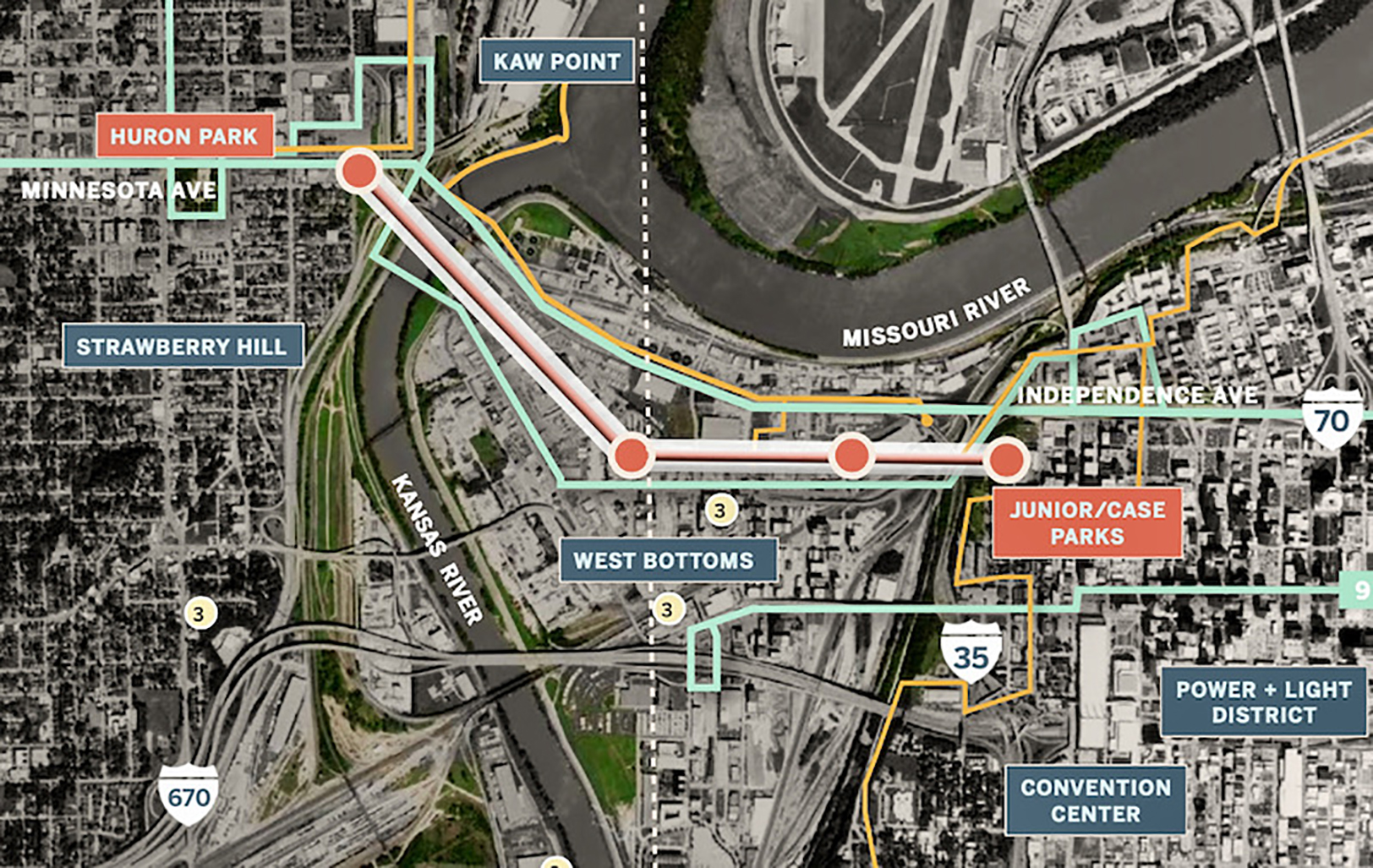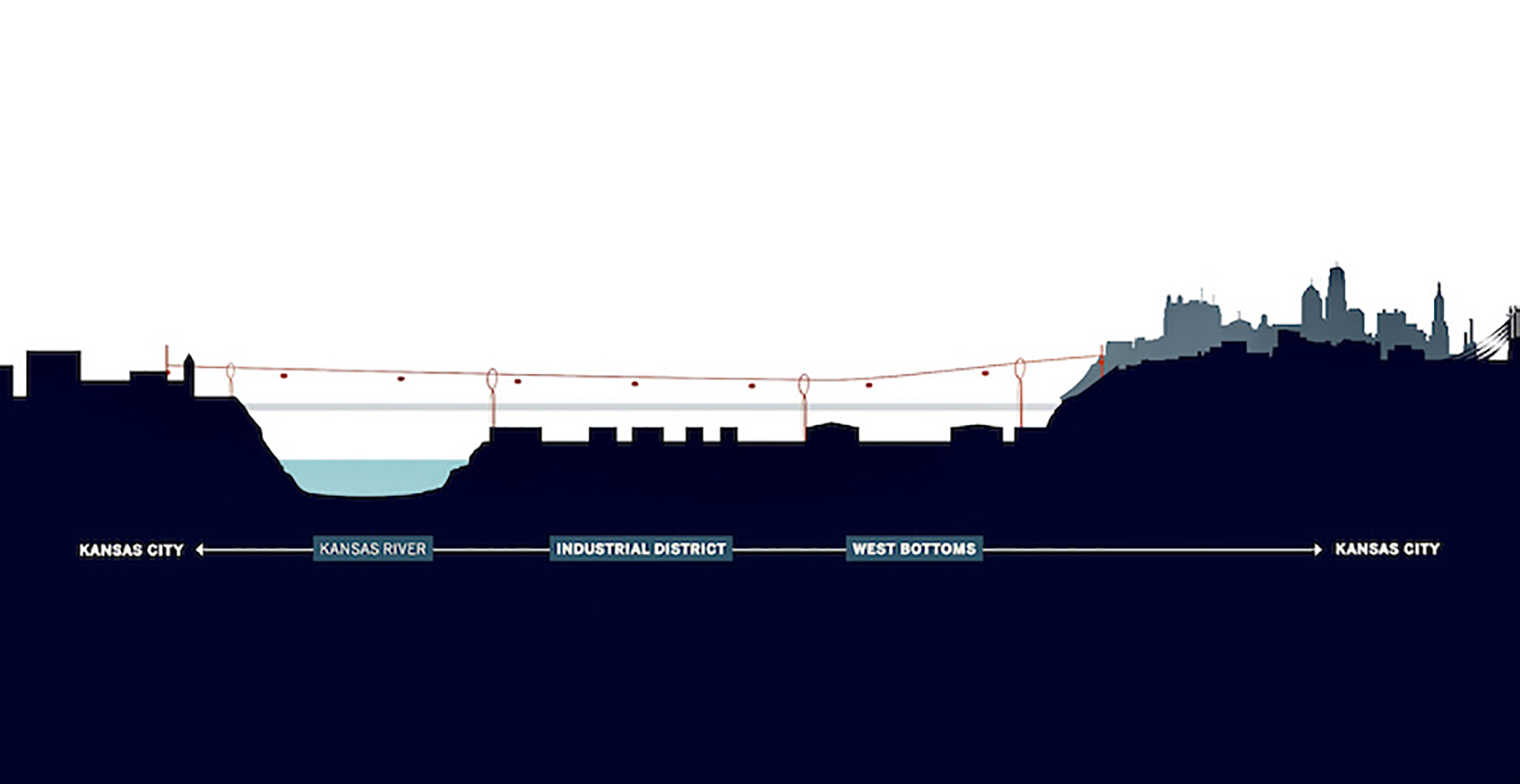
Cities, SI Urban 1/2022, Tourism
Infrastructure Projects in Kansas City
Kansas City is the largest city in the state of Missouri and lies directly on the border of Kansas state. For the Mid-American city it is clear that major investments in the area of infrastructure are coming up, but it remains unclear how these will look.
Options being discussed currently include an extension of the light railway to the stadium, overbuilding the multi- lane road, and a cable car. The idea of a cable car connection is not new for the city, as the activist Clay Chastain has previously tried on several occasions to introduce such a project.
However, whereas his ideas were previously still mostly embryonic, another cable car idea for the city is now attracting attention: a cable car connection over West Bottom and the Kansas River, which would connect the city centres of Kansas City (KCK) and Kansas City Missouri (KCMO).
The two cities are only a few kilometres apart but the poor transport connections make the distance feel significantly greater. Theproposal from Gunner Hand, Director of Planning and Urban Design of the Unified Government of Wyandotte County and Kansas City KS, would therefore include an urban cable car over almost three kilometres, which would connect the largest pedestrian zones of the cities.
“This is actually geographically difficult terrain. However, with a cable car, a connection across the river could be achieved easily,” Hand says in an interview with CityScene KC.

Costs
According to Hand, the construction costs per mile for a cable car would be only half as much as for the envisaged tram extension, i.e. 25 million dollars rather than 50 million dollars. The costs would indeed run into millions, but Hand believes this is a good time to consider such an ambitious project. The recent passing of the infrastructure bill by President Joe Biden for 1 billion dollars will open up new income sources for such projects in cities and states all over the country.
The current cable car idea envisages transport capacity of 3,000 – 5,000 people per hour.
The urban designer believes, this city connection holds great potential for residents. The planned connection would mean that residents in either part of the city could use the advantages of the other. Events, housing and jobs would therefore be more accessible for everyone, which would further improve the current upward trend of the areas.
“With probably the best view of the skyline of KC and significantly lower housing costs, the city centre of KCK canbenefitfromthesuccessofthecitycentre renovation in KCMO for its own ongoing renaissance.”
Outlook
At one time, the two Kansas Cities were connected by two tram lines as well as a number of bus routes. “The connections deteriorated and we basically now have the viaduct and that’s it,” Hand says.
A cable car could create a new, stable connection. Now, the first milestone would be toconvince the Mid-America Regional Council (MARC) of the transport project and so to open the door to potential funding. “If MARC adopts the concept, it will be possible to apply for money for a feasibility study.”
However, alongside the cable car project, the tram extension and multi-lane road are also credible infrastructure ideas with value added. It therefore remains to be seen which project will win in the end, or whether a differentsolutionwillbefoundforthe efficient connection.








